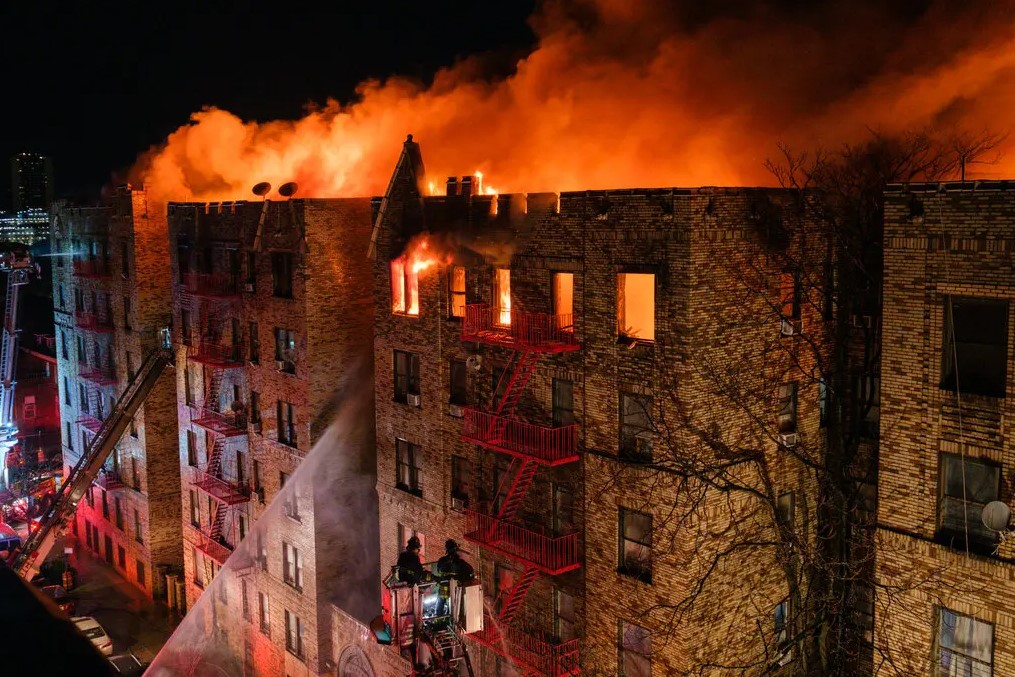As winter grips the Hudson Valley, residents turn to various heating methods to keep their homes warm and comfortable. However, with increased use of heating equipment and alternative heat sources, the risk of fire-related hazards rises significantly during the colder months. Understanding these risks and taking proactive measures can help protect your family and property from the devastating effects of fire and heat-related issues.
Common Winter Heat and Fire Hazards
1. Space Heaters
Space heaters are a popular choice for supplemental heating, especially in drafty areas. However, these devices pose a significant risk if not used properly. According to the National Fire Protection Association (NFPA), space heaters are responsible for approximately 43% of home heating fires annually.
- Safety Tip: Keep space heaters at least three feet away from flammable materials such as curtains, furniture, and bedding. Always turn them off when leaving the room or going to bed.
2. Wood-Burning Stoves and Fireplaces
Many Hudson Valley homes feature wood-burning stoves or fireplaces as a primary or supplementary heat source. While cozy and efficient, improper use or maintenance can lead to chimney fires or smoke inhalation risks.
- Safety Tip: Have your chimney inspected and cleaned annually by a certified professional to remove creosote buildup. Use a sturdy screen to prevent embers from escaping and ensure proper ventilation to avoid carbon monoxide exposure.
3. Overloaded Electrical Systems
With increased demand for electric heaters, holiday lights, and appliances, winter is a prime season for electrical fires. Overloaded outlets and extension cords can overheat and ignite.
- Safety Tip: Use surge protectors and avoid overloading circuits. Never run cords under rugs, as this can trap heat and cause fires.
4. Cooking-Related Fires
Cooking remains a leading cause of residential fires, even in winter. With holiday gatherings and family meals, the kitchen can become a high-risk area for heat-related dangers.
- Safety Tip: Never leave cooking unattended, and keep flammable items like oven mitts and paper towels away from heat sources.
5. Alternative Heating Sources
Power outages during winter storms often lead residents to use alternative heating methods such as generators, propane heaters, or candles. While these can provide temporary warmth, they also carry significant risks if not used properly.
- Safety Tip: Operate generators outdoors, away from windows and doors, to prevent carbon monoxide poisoning. Keep candles on stable surfaces and extinguish them before leaving the room.
Steps to Mitigate Risks
Install and Maintain Smoke Detectors
Ensure that smoke detectors are installed on every level of your home and outside sleeping areas. Test them monthly and replace batteries at least once a year.
Invest in Fire Extinguishers
Keep a fire extinguisher in key areas such as the kitchen, garage, and near fireplaces. Familiarize yourself with how to use it and ensure it is regularly serviced.
Develop a Fire Escape Plan
Prepare a fire escape plan that includes at least two exit routes from every room. Practice the plan with your family so everyone knows what to do in an emergency.
Legal Protections and Resources
If a fire or heat hazard arises due to faulty heating equipment or negligence, residents may have legal recourse to recover damages. New York State law holds property owners and manufacturers accountable for maintaining safe premises and producing safe products. For instance, a landlord’s failure to provide adequate heating or maintain fire safety standards can result in liability.
Stay Safe This Winter
By understanding and mitigating common winter heat and fire hazards, Hudson Valley residents can enjoy a safer and more comfortable season. Remember to stay vigilant, invest in safety equipment, and consult professionals when necessary. If you have concerns about fire-related damages, consider reaching out to local resources or legal professionals for guidance.

